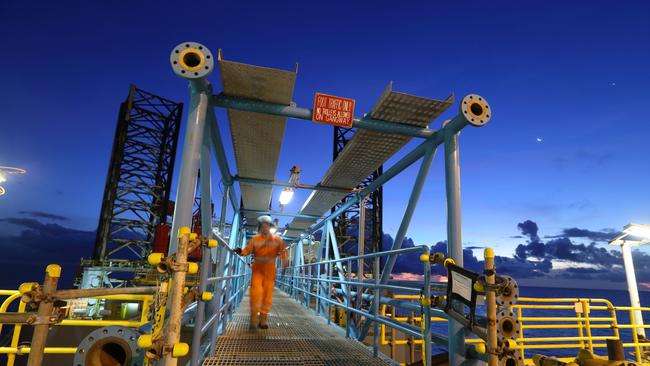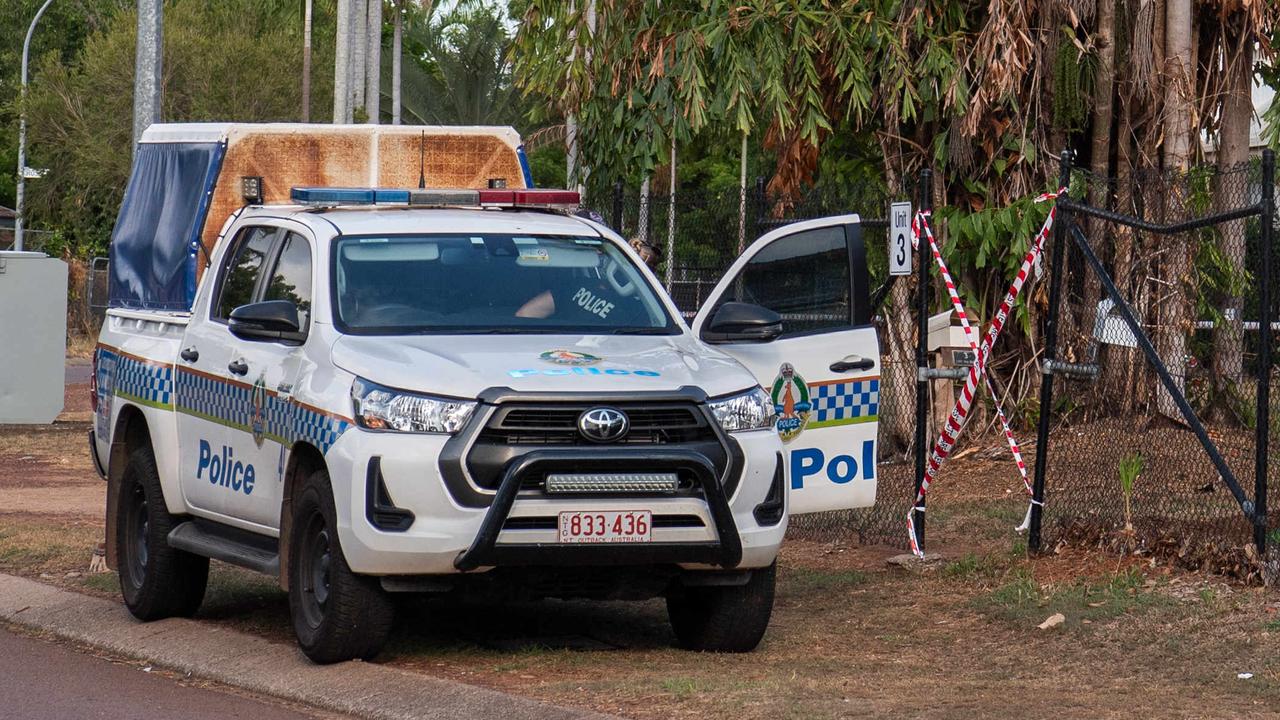Bayu-Undan gas field declared empty as the NT sweats on Barossa approval
A key economic contributor to the NT has dried out and a replacement is urgently required. Read what’s happened.

Northern Territory
Don't miss out on the headlines from Northern Territory. Followed categories will be added to My News.
The gas field that has fuelled Darwin’s first LNG plant for almost 20 years has depleted.
Operator Santos reported the Bayu-Undan field, about 500km north-west of Darwin, was emptied earlier this month.
Santos said the depletion of Bayu-Undan emphasised the importance of approvals for the Barossa gas project, which will provide a replacement gas supply for the Darwin LNG plant.
The $6bn Barossa project is currently stalled as the federal court considers an application from Tiwi Islanders that the development’s cultural impacts had not properly been assessed.
The Environmental Defenders Office has been working with Tiwi Islanders to prevent the project despite the pipeline passing 7km from the coastline and a processing plant to be built 140km north of Seagull Island on Melville Island’s north-west coast.

United States energy company Conoco Phillips won approvals to develop the LNG plant at Wickham Point in Darwin Harbour in 2002, and the first gas from Bayu Undan was processed in 2006.
The plant has been home to 180 permanent jobs over the past 17 years, with about $100m spent on local goods and services annually during operations.
Another $50m was injected into the local economy every four years during major shutdowns.
While Santos sweats on Barossa approvals to be finalised, the company is investing $925m into future-proofing the Darwin LNG plant for the next 20 years, with up to 300 people expected to be employed in construction and maintenance over the next 18 months.
Bayu-Undan still has a significant role to play in the NT’s economic future as a storage reservoir under a plan to develop a carbon capture and storage facility at Middle Arm.
If completed it would be the biggest carbon capture and storage facility in the world, with storage capacity up to 10 million tonnes of CO2 per year.
Emissions from the Barossa gas project would be the planned joint-user facility’s first customer with 2.3 million tonnes of CO2 stored there per year.
The company said Bayu-Undan CCS would make Barossa one of the lowest carbon intensive LNG projects in the world.

The announcement Bayu-Undan was empty and Santos’ continuing push to develop the Barossa comes as a new study shows Australia will need a substantial gas production until 2050 to deliver reliable and affordable energy.
According to a new report prepared by EY and commissioned by Australian Energy Producers, gas will play a major role in the global net zero transition.
EY examined around 350 net zero pathways around the world and recommended Australia should prepare for multiple gas production scenarios due to the uncertainty of the transition.
“Ongoing investment in gas supply is required to maintain production levels from operating fields,” the report said.
“As these fields begin to decline, investment in new supply options will be required to meet projected demand.”
Australian Energy Producers chief executive Samantha McCulloch said gas was a “core pillar” of Australia’s energy and climate transition.
More Coverage
Originally published as Bayu-Undan gas field declared empty as the NT sweats on Barossa approval





